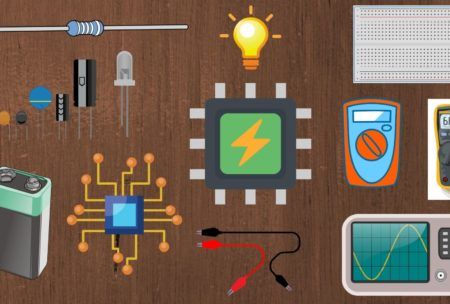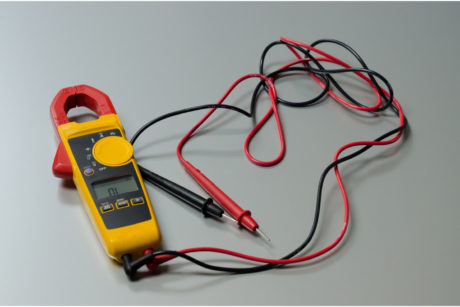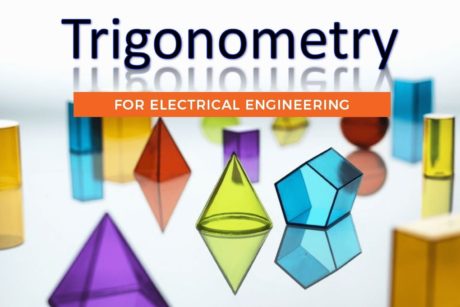Learn current electricity and simulation of Electrical circuits - recommended for Electrical and Electronics Engineers. Read more.
Meet Swarit Mahalsekar, the Biomedical engineer who has made it his mission to share his knowledge and skills in electronics with the world. As an experienced online instructor on multiple platforms, Swarit has helped countless students master the art of electronics. But that's not all – Swarit's passion for teaching led him to found "Practical Buddy," a platform dedicated to providing students with practical, hands-on experience in electronics. With his extensive background in completing e
Access all courses in our library for only $9/month with All Access Pass
Get Started with All Access PassBuy Only This CourseAbout This Course
Who this course is for:
- Those who are curious to learn Arduino
- Those who are curious to learn electronics
- Those who are curious to learn electric circuits
- Those who are curious to learn simulation software
- Anyone opting for electrical or electronics engineering
What you’ll learn:
- Some basic concepts of current electricity like current, voltage, resistor, etc along with introduction to Tinkercad software
- Different techniques to solve complex circuits along with simulation of that circuits on the Tinkercad software
- Network Theory concepts (Mesh, super-mesh, Nodal analysis, Voltage and current divider techniques, Thevenin’s and Norton’s theorem)
- Simulation of different circuits on Tinkercad software
- How to operate voltmeter, ammeter and multimeter
- How to measure voltage and current of any circuit and resistance of any resistor
- How to generate different ac signals like Sine wave, Square wave and Triangular wave
- How to convert any complex circuit into it’s simple form
Requirements:
- Basic algebra for mathematical calculations or scientific calculator
I divided this course into two parts. In the first part, you will be learning some basic concepts of current electricity in great depth and an introduction to Tinkercad software. After completing 1st part, you will start the 2nd part and in that, you will be learning the complex circuitry and its simulation on the Tinkercad software.
I will not only teach you the traditional methods to solve complex circuitry, but at the same time, I will also provide you with some shortcut tricks which will help you to solve that circuit quickly.
Part 1: Current Electricity and introduction to the Tinkercad software
- Difference between conductors and insulators
- What is a current?
- What is a resistor and how to find its value?
- What is Voltage?
- What is power and how we can calculate it?
- Difference between Ac and Dc Circuits?
- Ohm’s Law with experiment
- Series and Parallel circuits + Numericals
After lecture 7th you will be introduced to the Tinkercad software.
Part 2: Electrical Circuits and its simulation in Tinkercad software
What are nodes, meshes, and loops?
- KVL and KCL rule
- Mesh analysis
- Supermesh analysis
- Nodal analysis
- Voltage and Current divider rule
- Thevenin’s Law
- Norton’s Law
Simulation is done on Tinkercad Software.
Our Promise to You
By the end of this course, you will have learned basic concepts of current electricity.
10 Day Money Back Guarantee. If you are unsatisfied for any reason, simply contact us and we’ll give you a full refund. No questions asked.
Get started today!
Course Curriculum
| Section 1 - Introduction | |||
| Course Overview | 00:00:00 | ||
| Section 2 - Current Electricity | |||
| Conductors, Insulators And Semiconductors | 00:00:00 | ||
| What Is A Current? | 00:00:00 | ||
| Resistor | 00:00:00 | ||
| What Is Voltage? | 00:00:00 | ||
| Power | 00:00:00 | ||
| Difference Between Ac And Dc Signals | 00:00:00 | ||
| Section 3 - Introduction To Tinkercad Software | |||
| Basics Of Tinkercad Software (Dc Signal Analysis) | 00:00:00 | ||
| Understanding Different Ac Signal, Dc Offset Voltage And Concept Of Frequency | 00:00:00 | ||
| Understanding The Concept Of Time And Frequency In Depth On Tinkercad Software | 00:00:00 | ||
| Section 4 - Ohm's Law | |||
| Introduction To Ohm's Law | 00:00:00 | ||
| Experimental Analysis Of Ohm's Law Experiment 1 | 00:00:00 | ||
| Experimental Analysis Of Ohm's Law Experiment 2 | 00:00:00 | ||
| Ohm's Law Conclusion | 00:00:00 | ||
| Section 5 - Series And Parallel Circuits | |||
| Introduction To Series And Parallel Circuits | 00:00:00 | ||
| Basic Numerical On Series And Parallel Circuits | 00:00:00 | ||
| Numerical On The Combination Of Series Parallel Circuits | 00:00:00 | ||
| Complex Numerical On Series Parallel Circuit | 00:00:00 | ||
| Section 6 - Electrical Circuits | |||
| Concept Of Nodes, Meshes And Loops | 00:00:00 | ||
| Section 7 - KVL And KCL Law | |||
| Introduction To Kirchoff's Voltage Law | 00:00:00 | ||
| Introduction To Kirchoff's Current Law | 00:00:00 | ||
| Basic Numericals On KVL And KCL | 00:00:00 | ||
| Section 8 - Mesh Analysis | |||
| Understanding Mesh Analysis | 00:00:00 | ||
| Solving Circuit With Two Meshes In A Loop Using Mesh Analysis | 00:00:00 | ||
| Simulation Of The Above Circuit | 00:00:00 | ||
| Solving Circuit With Three Meshes In A Loop Using Mesh Analysis | 00:00:00 | ||
| Simulation Of The Above Circuit | 00:00:00 | ||
| Shortcut Trick To Solve Mesh Analysis | 00:00:00 | ||
| Section 9 - Supermesh Analysis | |||
| Basics Of Supermesh | 00:00:00 | ||
| Example Of Supermesh | 00:00:00 | ||
| Supermesh Numerical | 00:00:00 | ||
| Section 10 - Nodal Analysis | |||
| Understanding Definition And Basic Concept Of Nodal Analysis | 00:00:00 | ||
| Nodal Analysis Example | 00:00:00 | ||
| Numerical On Nodal Analysis | 00:00:00 | ||
| Simulation Of Nodal Analysis Circuit Part 1 | 00:00:00 | ||
| Simulation Of Nodal Analysis Part 2 | 00:00:00 | ||
| Section 11 - Voltage Divider Technique | |||
| Introduction To Voltage Divider Technique | 00:00:00 | ||
| Numerical On Voltage Divider Technique | 00:00:00 | ||
| Example Of Voltage Divider Technique | 00:00:00 | ||
| Section 12 - Current Divider Technique | |||
| Introduction To Current Divider Technique | 00:00:00 | ||
| Numerical On Current Divider Rule | 00:00:00 | ||
| Section 13 - Thevenin's Theorem | |||
| Introduction To Thevenin's Theorem | 00:00:00 | ||
| Numerical On Thevenin' Theorem | 00:00:00 | ||
| Section 14 - Norton's Theorem | |||
| Introduction To Norton's Theorem | 00:00:00 | ||
| Numerical On Norton's Theorem | 00:00:00 | ||
About This Course
Who this course is for:
- Those who are curious to learn Arduino
- Those who are curious to learn electronics
- Those who are curious to learn electric circuits
- Those who are curious to learn simulation software
- Anyone opting for electrical or electronics engineering
What you’ll learn:
- Some basic concepts of current electricity like current, voltage, resistor, etc along with introduction to Tinkercad software
- Different techniques to solve complex circuits along with simulation of that circuits on the Tinkercad software
- Network Theory concepts (Mesh, super-mesh, Nodal analysis, Voltage and current divider techniques, Thevenin’s and Norton’s theorem)
- Simulation of different circuits on Tinkercad software
- How to operate voltmeter, ammeter and multimeter
- How to measure voltage and current of any circuit and resistance of any resistor
- How to generate different ac signals like Sine wave, Square wave and Triangular wave
- How to convert any complex circuit into it’s simple form
Requirements:
- Basic algebra for mathematical calculations or scientific calculator
I divided this course into two parts. In the first part, you will be learning some basic concepts of current electricity in great depth and an introduction to Tinkercad software. After completing 1st part, you will start the 2nd part and in that, you will be learning the complex circuitry and its simulation on the Tinkercad software.
I will not only teach you the traditional methods to solve complex circuitry, but at the same time, I will also provide you with some shortcut tricks which will help you to solve that circuit quickly.
Part 1: Current Electricity and introduction to the Tinkercad software
- Difference between conductors and insulators
- What is a current?
- What is a resistor and how to find its value?
- What is Voltage?
- What is power and how we can calculate it?
- Difference between Ac and Dc Circuits?
- Ohm’s Law with experiment
- Series and Parallel circuits + Numericals
After lecture 7th you will be introduced to the Tinkercad software.
Part 2: Electrical Circuits and its simulation in Tinkercad software
What are nodes, meshes, and loops?
- KVL and KCL rule
- Mesh analysis
- Supermesh analysis
- Nodal analysis
- Voltage and Current divider rule
- Thevenin’s Law
- Norton’s Law
Simulation is done on Tinkercad Software.
Our Promise to You
By the end of this course, you will have learned basic concepts of current electricity.
10 Day Money Back Guarantee. If you are unsatisfied for any reason, simply contact us and we’ll give you a full refund. No questions asked.
Get started today!
Course Curriculum
| Section 1 - Introduction | |||
| Course Overview | 00:00:00 | ||
| Section 2 - Current Electricity | |||
| Conductors, Insulators And Semiconductors | 00:00:00 | ||
| What Is A Current? | 00:00:00 | ||
| Resistor | 00:00:00 | ||
| What Is Voltage? | 00:00:00 | ||
| Power | 00:00:00 | ||
| Difference Between Ac And Dc Signals | 00:00:00 | ||
| Section 3 - Introduction To Tinkercad Software | |||
| Basics Of Tinkercad Software (Dc Signal Analysis) | 00:00:00 | ||
| Understanding Different Ac Signal, Dc Offset Voltage And Concept Of Frequency | 00:00:00 | ||
| Understanding The Concept Of Time And Frequency In Depth On Tinkercad Software | 00:00:00 | ||
| Section 4 - Ohm's Law | |||
| Introduction To Ohm's Law | 00:00:00 | ||
| Experimental Analysis Of Ohm's Law Experiment 1 | 00:00:00 | ||
| Experimental Analysis Of Ohm's Law Experiment 2 | 00:00:00 | ||
| Ohm's Law Conclusion | 00:00:00 | ||
| Section 5 - Series And Parallel Circuits | |||
| Introduction To Series And Parallel Circuits | 00:00:00 | ||
| Basic Numerical On Series And Parallel Circuits | 00:00:00 | ||
| Numerical On The Combination Of Series Parallel Circuits | 00:00:00 | ||
| Complex Numerical On Series Parallel Circuit | 00:00:00 | ||
| Section 6 - Electrical Circuits | |||
| Concept Of Nodes, Meshes And Loops | 00:00:00 | ||
| Section 7 - KVL And KCL Law | |||
| Introduction To Kirchoff's Voltage Law | 00:00:00 | ||
| Introduction To Kirchoff's Current Law | 00:00:00 | ||
| Basic Numericals On KVL And KCL | 00:00:00 | ||
| Section 8 - Mesh Analysis | |||
| Understanding Mesh Analysis | 00:00:00 | ||
| Solving Circuit With Two Meshes In A Loop Using Mesh Analysis | 00:00:00 | ||
| Simulation Of The Above Circuit | 00:00:00 | ||
| Solving Circuit With Three Meshes In A Loop Using Mesh Analysis | 00:00:00 | ||
| Simulation Of The Above Circuit | 00:00:00 | ||
| Shortcut Trick To Solve Mesh Analysis | 00:00:00 | ||
| Section 9 - Supermesh Analysis | |||
| Basics Of Supermesh | 00:00:00 | ||
| Example Of Supermesh | 00:00:00 | ||
| Supermesh Numerical | 00:00:00 | ||
| Section 10 - Nodal Analysis | |||
| Understanding Definition And Basic Concept Of Nodal Analysis | 00:00:00 | ||
| Nodal Analysis Example | 00:00:00 | ||
| Numerical On Nodal Analysis | 00:00:00 | ||
| Simulation Of Nodal Analysis Circuit Part 1 | 00:00:00 | ||
| Simulation Of Nodal Analysis Part 2 | 00:00:00 | ||
| Section 11 - Voltage Divider Technique | |||
| Introduction To Voltage Divider Technique | 00:00:00 | ||
| Numerical On Voltage Divider Technique | 00:00:00 | ||
| Example Of Voltage Divider Technique | 00:00:00 | ||
| Section 12 - Current Divider Technique | |||
| Introduction To Current Divider Technique | 00:00:00 | ||
| Numerical On Current Divider Rule | 00:00:00 | ||
| Section 13 - Thevenin's Theorem | |||
| Introduction To Thevenin's Theorem | 00:00:00 | ||
| Numerical On Thevenin' Theorem | 00:00:00 | ||
| Section 14 - Norton's Theorem | |||
| Introduction To Norton's Theorem | 00:00:00 | ||
| Numerical On Norton's Theorem | 00:00:00 | ||



